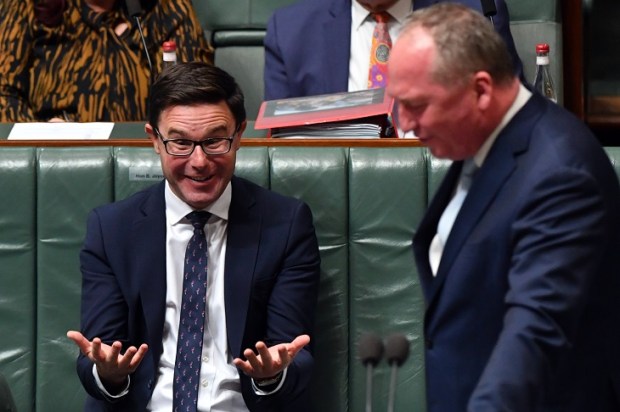Every Australian voiced an opinion about the cost-of-living crisis during the months leading into the Australian federal election. The election itself was seen as a mandate about who was better suited to deal with this crisis. Both Labor and the Coalition proposed various subsidies – to fuel, medicines, housing, HECS – as policies to help cope with the situation.
Some observers blamed retail giants and supermarket chains. Some demonised immigrants. (To be sure, a sudden large intake of immigrants did contribute to increased demand for housing.) But all these observations were way off the true mark.
The assistance policies treated inflation like an exogenous event – like category 5 cyclones or volcanoes erupting, where the emphasis ought to be on early detection, forewarning, and rescue – because they are not preventable.
Yet economic history tells us that all inflation can be and has been prevented for decades, centuries even – with startlingly good results for economic growth.
Let’s start by noting the price of enjoying a cup of coffee. Around 50 years ago, in 1975, the average price of a medium-sized cup in Australia was 60 cents. 25 years ago, at the turn of the century, we could buy a middle-sized cappuccino for two dollars. It had shot up over three times as much. In 2020, just before the pandemic, this medium-sized cappuccino was four dollars. It had doubled in 20 years. Now, in 2025, just five years later, it’s costing us almost six dollars, almost three times the cost 25 years ago, and is forecast to reach eight dollars by the end of the year. Ouch. It’s not just coffee that has gone up. A plate of fish and chips at the local bistro is about 20 dollars. A middy of beer at a pub is around 8 dollars. House prices and rentals have skyrocketed. Private health insurance is through the roof. Going to the movies with the family, buying popcorn and ice-cream for three children, can now set you back a whopping hundred dollars.
All of this, I believe, is the result of the largest scientific mistruth of all time. Why are endemic price rises across the board a scientific scam? It’s because people in government love this trick. They and their cronies benefit from it while the rest of us suffer. These include economists who benefit from research grants and consulting gigs allocated by governments. They keep telling you that a little bit of inflation is required for economic growth. That some agency is required to keep this inflation between two and 3 per cent per annum. This is manifestly absurd. Social scientists have been propagating a mistruth for over a hundred years, mostly inadvertently, from 1915, and especially from the 1930s.
A century before the swindle began, from 1814 to 1914, the United Kingdom had negative inflation. Prices in 1914 in general were less than they were in 1814. This is logical. Technology does not go backward. It stays the same or moves forward in spurts. In today’s world, the scientific and technological knowledge of humankind does not regress. When the Library of Alexandria burned down, knowledge was lost. Now knowledge is stored in multiple locations, including virtual locations. Wars can (and do) set economies back. But very little else except government overdoing their largesse can diminish our economy.
Why did prices fall slightly in the UK? In the UK, money was on a gold standard. The market was largely free but for some tariffs from 1870 onward. Naturally, the market performed wonders. The aggregate supply of goods shot up. But the supply of gold did not keep up with the pace of economic growth. So prices went down in tune with increasing productivity. That’s how it should be. Such deflation is excellent news. Gold producers do not have a limitless incentive to explore the more remote sources of gold. They will never outdo the demand for money. The United States during this period was on a bimetallic standard of silver and gold. Now, even in the United States, prices in 1914 were about the same as they were in 1814. This is despite the inflation suffered during the American Civil War from 1861-65.
Now, despite inflation being zero to negative, both countries had phenomenal records of economic growth during this time. Indeed, when inflation is absent, there is little incentive to undertake speculative buying and selling of consumer assets like real estate for investment, and far more incentive to find and fund genuinely productive capital assets. When inflation of the money supply is removed from the economy, productivity soars. The historical record is crystal clear on this.
Even when gold is the only form of money, we can have paper money for the sake of convenience. But the government should only issue paper certificates that certify how much gold you are entitled to, at a gold-to-dollar ratio that is permanently fixed for all time, forever and ever.
One foot is twelve inches. A yard is three feet. One meter is a hundred centimetres. Those relationships are unchangeable for all time. Otherwise, all hell will break loose in the world of technology. The same is true of the economics of money. For money to have true value, paper money needs to be a certificate of weight, backed by the real item. Today, you can buy a 10-ounce gold bar from Perth Mint, which has a great reputation for integrity. Which means you can sell the Perth Mint certificates for their true value.
Now imagine that all money is like that. A 10-ounce gold bar today costs about $52,600. One ounce is 28.4 grams. That’s roughly $185 per gram. In other words, the Australian dollar is worth 5.4 milligrams of gold, say, 5 milligrams. If we permanently set the dollar, as a unit of weight, to equal 5 milligrams, we would have a gold standard. When the United States passed the Gold Standard Act of 1900, the dollar weight was fixed at 1.37 grams of gold. If we had stayed on the gold standard, the Australian dollar today would have been worth about 1 gram of gold, instead of 5 milligrams. In other words, over a century, our money has been devalued by a factor of 200 times. The United States dollar was set in the Gold Standard Act at US$20.67 per troy ounce, and that price today is about US$3,308, a 160 times devaluation. The CPI tables vastly understate this number because of immense productivity gains over a century and the changes in the CPI basket.
Governments devalue money because it allows them to spend on schemes that purportedly help the needy or subsidise the so-called ‘renewables’, but they do not rake in enough taxes. They just spend. Recklessly so. They monopolise resources and limit productivity. The central bank can create money limitlessly, by monetising its purchases of government debt. We call this fiat money. It is dangerous. We may never get hyperinflation in Australia because the Reserve Bank of Australia (RBA) is not completely irresponsible, but look at what nonstop 3 per cent rises do – prices double every 25 years. It can easily get out of hand toward 10 per cent annual inflation, in which case, prices soar to 10 times original in 25 years. This is the true cost-of-living crisis: diminution of the private-sector produce and a simultaneous expansion of fiat money supply.
It creates a money illusion. House prices and rentals have not skyrocketed in gold-weight terms, but salaries have reduced in real value. Post-tax salaries have reduced even more as tax rates are progressively higher (the CPI adjustment is insufficient). The cost of cappuccinos, beer, and fish & chips have not shot up in gold-weight equivalents. Consider this: in the UK, the price of gold to the pound hardly moved for 200 years (1717-1917). Now that’s the permanency we need.
It’s not too late for Australia to adopt at least a partial gold standard and permanently fix the dollar to gold ratio by making the dollar a unit of weight. The federal government will be forced to reduce its reckless growth and start balancing its budget. That’s the dirty secret they don’t want you to know. They want you to keep blaming retail giants, negative gearing, and other factors such as immigration so that no external market force disciplines the government.
I am dead sure of this diagnosis. In my view, Australia should get back to a gold standard it abandoned almost a century ago. A gold standard that also dispenses with monetary policy altogether.

























